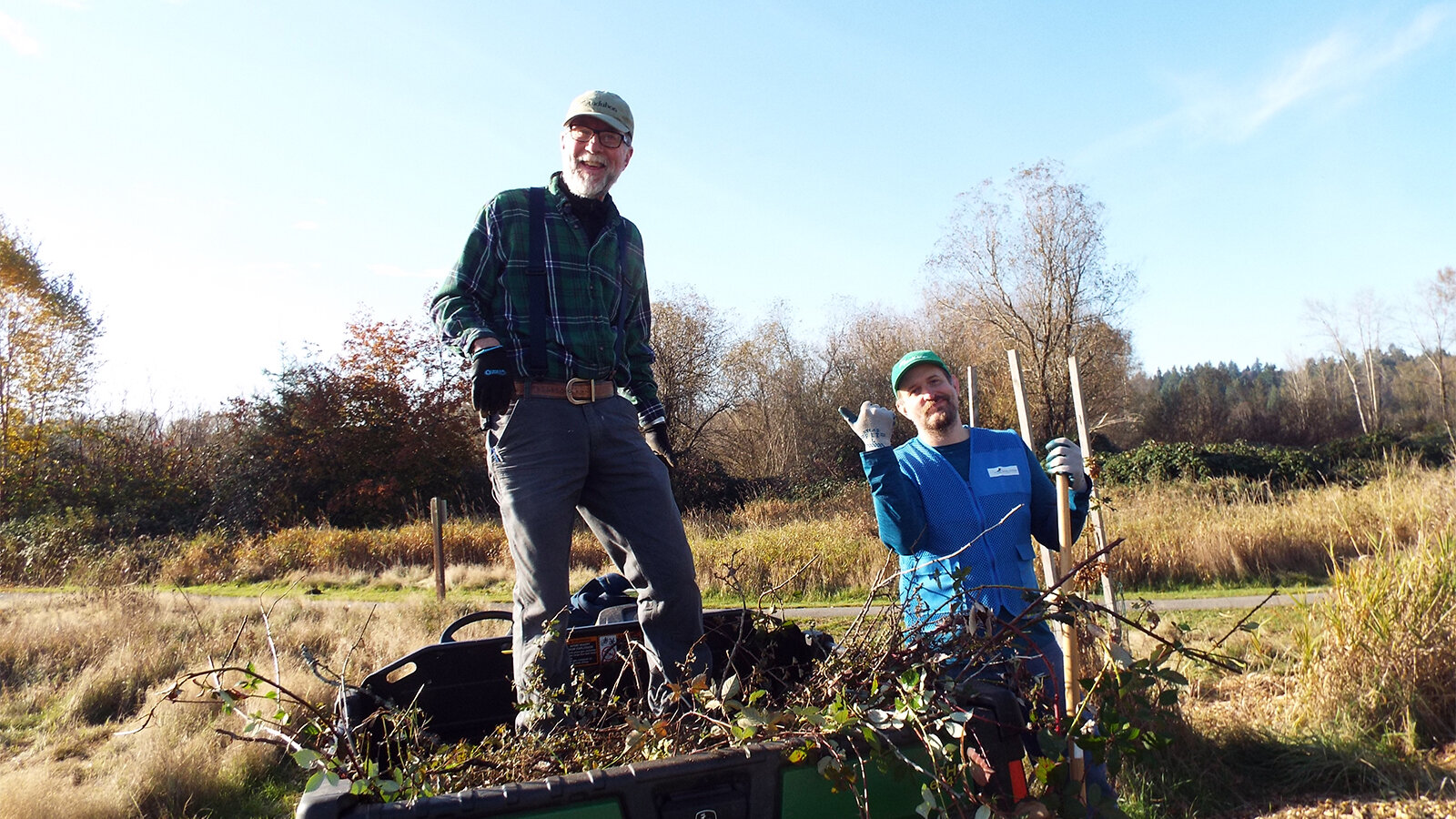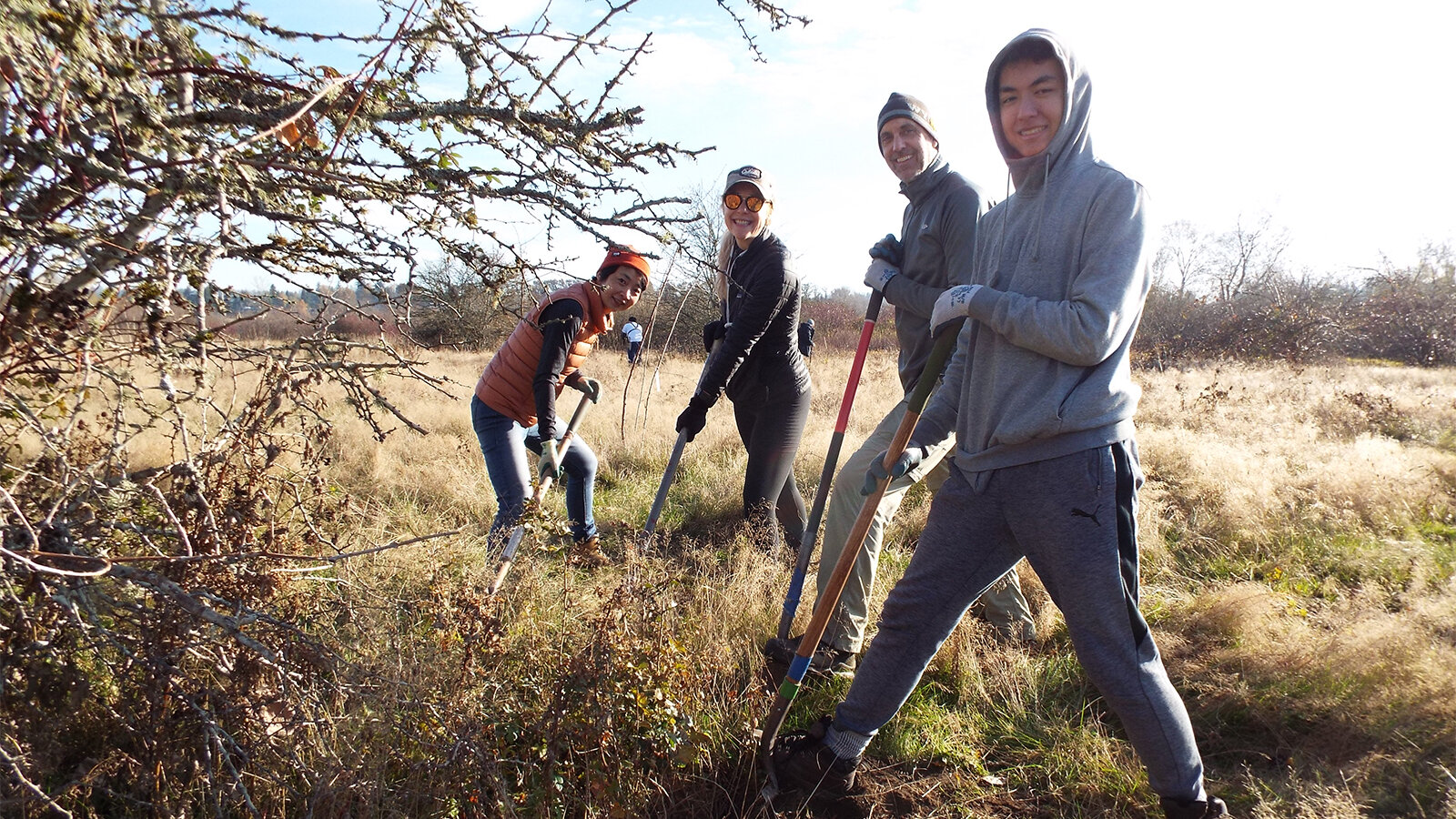Habitat Restoration in the Marymoor Park Bird Loop Natural Area – November Update
Last month, 22 volunteers worked 68.5 hours in the oak savannah (the southern half of the meadow, past the sheds). To be honest, it is more of an English hawthorn savannah… but we are working hard to change it! Here’s why.
English hawthorn is classified as a noxious weed in Washington State. Traditionally used as hedgerows to hold livestock, English hawthorn grows in dense thickets. These clumps can block animal movement and dramatically change forest and grassland ecosystems. English hawthorn will also hybridize and compete with Washington’s native hawthorn. Research suggests that fruit-eating birds prefer English hawthorn over the native hawthorn because English hawthorn produces more fruit per tree, and on average, each berry is larger and has a larger berry to seed size.
Right now, we estimate that there are hundreds, if not thousands of English hawthorns in the oak savannah. There are about 10-20 mature hawthorns that were snagged several years ago. Unfortunately, these tenacious trees are showing signs of regrowth, and there are many small hawthorns up to 3 feet high. Often the young hawthorns are concentrated around the older plants. This month, we dug out 5 cubic yards of hawthorn. The goal is to remove all the immature hawthorns, and make the older trees accessible for chemical treatment by King County staff. It is a tough decision to balance manual and chemical treatment, and these are best management practices for English hawthorn.
As of November, 1 adult hawthorn and surrounding baby plants is completely cleared, and 3 more are in process. We have also dug out many immature hawthorns away from any large trees. Thank you to all the volunteers for their hard work!




